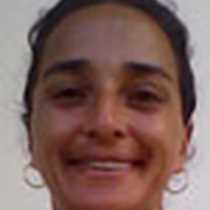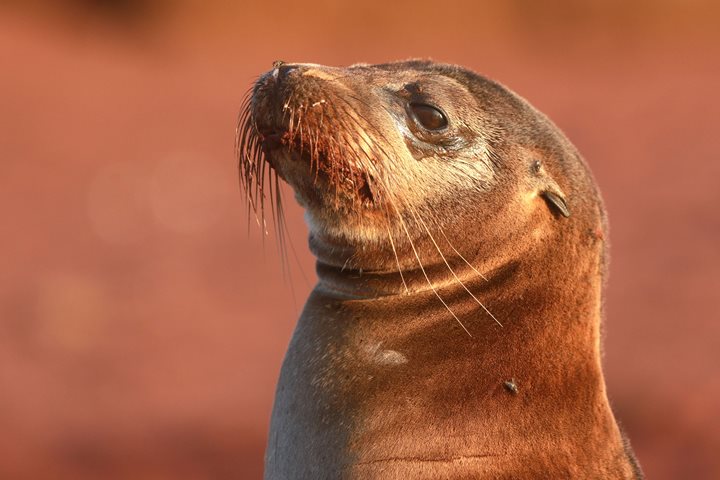Early this morning we visited Bartolome Island, an amazing tuff volcano with scoria and spatter cone formations. We climbed towards the top at 114 m while discovering more about the geology of the islands. The vegetation is all about pioneer plants that are highly tolerant to the heat of the sun and can survive with very little water. In the distance we were able to see Santiago Island and a black lava field which is a young volcanic event of only 118 years. The highlight, Pinnacle Rock, is a beautiful eroded tuff formation and is one of the most famous and well known landscapes of the Galapagos. Later in the afternoon we also visited Rabida Island where we ended our day with an amazing sunset!
- Daily Expedition Reports
- 18 Sep 2017
Bartolome & Rabida Islands, 9/18/2017, National Geographic Islander
- Aboard the National Geographic Islander
- Galápagos
Cristina Ahassi, Naturalist
Cristina was born in Quito but spent her entire childhood in the Galápagos Islands surrounded by the nature that has inspired her passion for her work.
Read MoreJulio Rodriguez, Videographer
Born and raised in Ecuador, the son of Spanish and American parents, Julio developed a passion for storytelling and environmental conservation at an early age. After majoring in History at Carleton College (Minnesota), with a thesis on the Basque ant...
Read MoreShare Report
Related Reports
11/23/2022
Read
National Geographic Islander II
Isabela and Fernandina
Our day began with the chance to point out a lot of interesting geological features as we enjoyed Zodiac tours along a massive flank of Ecuador Volcano on Punta Vicente Roca. In the afternoon, we took a sunny walk on Punta Espinoza on Fernandina Island. We spotted many iguanas, and a bunch of sea lions hanging around, too.
11/22/2022
Read
National Geographic Islander II
North Seymour & Rabida Islands
Relatively small and low compared to neighboring Santa Cruz, North Seymour is located to the north of Baltra. The island is dry with predominantly low shrubs, like prickly pear cacti. The incense trees are bare during the dry season. Seabirds like frigatebirds and blue-footed boobies nest on the island, and sea lions rest on the sand when they are not fishing. Land and marine iguanas also live here. Rabida is in the middle of the archipelago and has a striking red sand beach. We observed a small colony of sea lions of all ages resting or nursing. Behind the beach, American flamingos nest in a brackish lagoon. This island is full of contrasts and wildlife that we enjoyed observing during this day of expedition.









